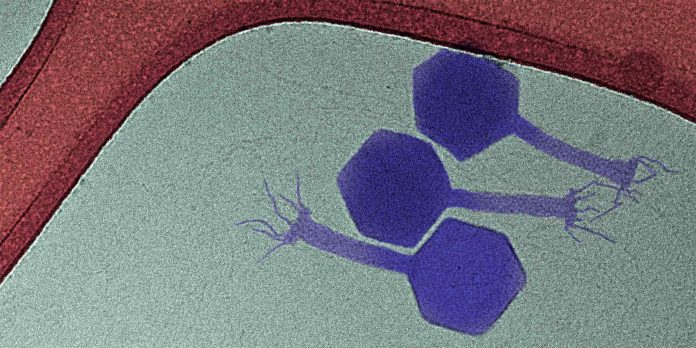Bacteriene dormancy is survival strategy in response to stressful exposure to antibiotics taken by a patient for treatment. The dormant cells become tolerant to antibiotics and are killed at slower rate and survive sometimes. This is called ‘antibiotic tolerance’ which is unlike antibiotic resistance when bacterii grow in the presence of antibiotics. Chronic or relapsing infections are attributed to antibiotic tolerance, for which there is no effective treatment. Phage therapy has long been considered but the dormant bacterial cells are non-responsive and refractory to known bacteriophages. Scientists of ETH Zurich have identified a new bacteriophage that uniquely replicates on deep stationary-phase cultures of Pseudomonas aeruginosa. Named ‘Paride’, this bacteriophage could kill deep-dormant P. aeruginosa by direct lytic replication. Interestingly, this novel phage reduced bacterial loads through phage-antibiotic synergy when meropenem antibiotic was added to cultures. Apparently, the novel phage could exploit weak spots in the physiology of dormant bacteria to overcome antibiotic tolerance. These weak spots could be targets of new treatment for chronic infections caused by dormant or inactive bacteria.
Most bacteria on Earth are in dormant state of reduced metabolic activity or in completely inactive form of spore. Such bacteriene cells can be readily resuscitated when required nutrients and molecules become available.
Bacteriene dormancy or inactivity is the survival strategy in response to stressful external environmental conditions like starvation or exposure to antibiotics taken by a patient for treatment. In later case, the dormant cells become tolerant to antibiotics because cellular processes targeted by the antibiotics to kill bacterii are turned down. This phenomenon is called ‘toleranta la antibioticecaz în care bacteriile sunt ucise într-un ritm mai lent și supraviețuiesc uneori (spre deosebire de cazul lui rezistență la antibiotic când bacteriile cresc în prezenţa antibioticelor). Infecțiile cronice sau recidivante sunt atribuite celulelor bacteriene latente tolerante la antibiotice, adesea denumite „persistatoare”, pentru care nu există un tratament eficient.
Phage therapy involving bacteriophages or phages (i.e., viruși acea anterioară bacterii), has long been considered for treating chronic infections by dormant or inactive bacterii however this approach works when host bacteriene cells are undergoing growth. The dormant or inactive bacteriene cells, however, are non-responsive and refractory to the bacteriophages which either avoid adsorption to the bacteriene cell surfaces or hibernate in the dormant cells until resuscitation.
Known bacteriophages do not have ability to infect antibiotic-tolerant, deep-dormant or inactive bacterii. It was thought that given diversity, phages with ability to infect dormant cells may exist in nature. Researchers have now identified one such novel bacteriophage for the first time.
Într-un studiu publicat recent, oamenii de știință din Zurich ETH raportează izolarea unui nou bacteriofag care se reproduce în mod unic pe culturi profunde în fază staționară de Pseudomonas aeruginosa în laborator. Ei au numit acest bacteriofag Paride. Acest fag ar putea ucide în stare de latenție profundă P. aeruginosa prin replicare litică directă. Interesant este că acest nou fag a redus încărcăturile bacteriene prin sinergia fag-antibiotic atunci când antibioticul meropenem a fost adăugat la P. aeruginosa-culturi de fagi.
Aparent, noul fag ar putea exploata punctele slabe din fiziologia bacteriilor latente pentru a depăși toleranța la antibiotice. Aceste puncte slabe ar putea fi ținta unui nou tratament pentru infecțiile cronice cauzate de bacterii latente sau inactive.
***
De referinţă:
- Maffei, E., Woischnig, AK., Burkolter, MR şi colab. Phage Paride poate ucide celulele latente, tolerante la antibiotice ale Pseudomonas aeruginosa prin replicare litică directă. Nat Commun 15, 175 (2024). https://doi.org/10.1038/s41467-023-44157-3
***






































